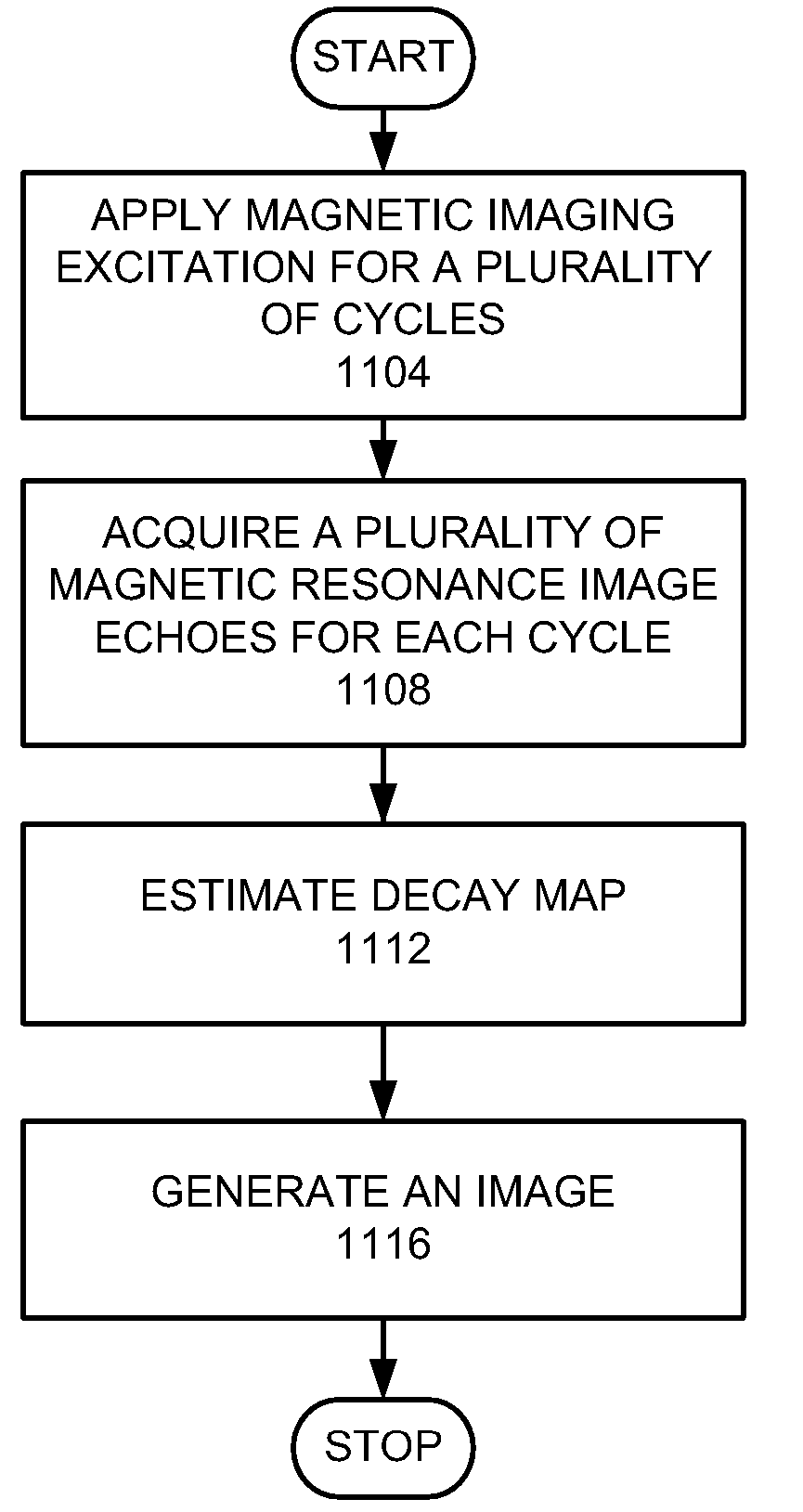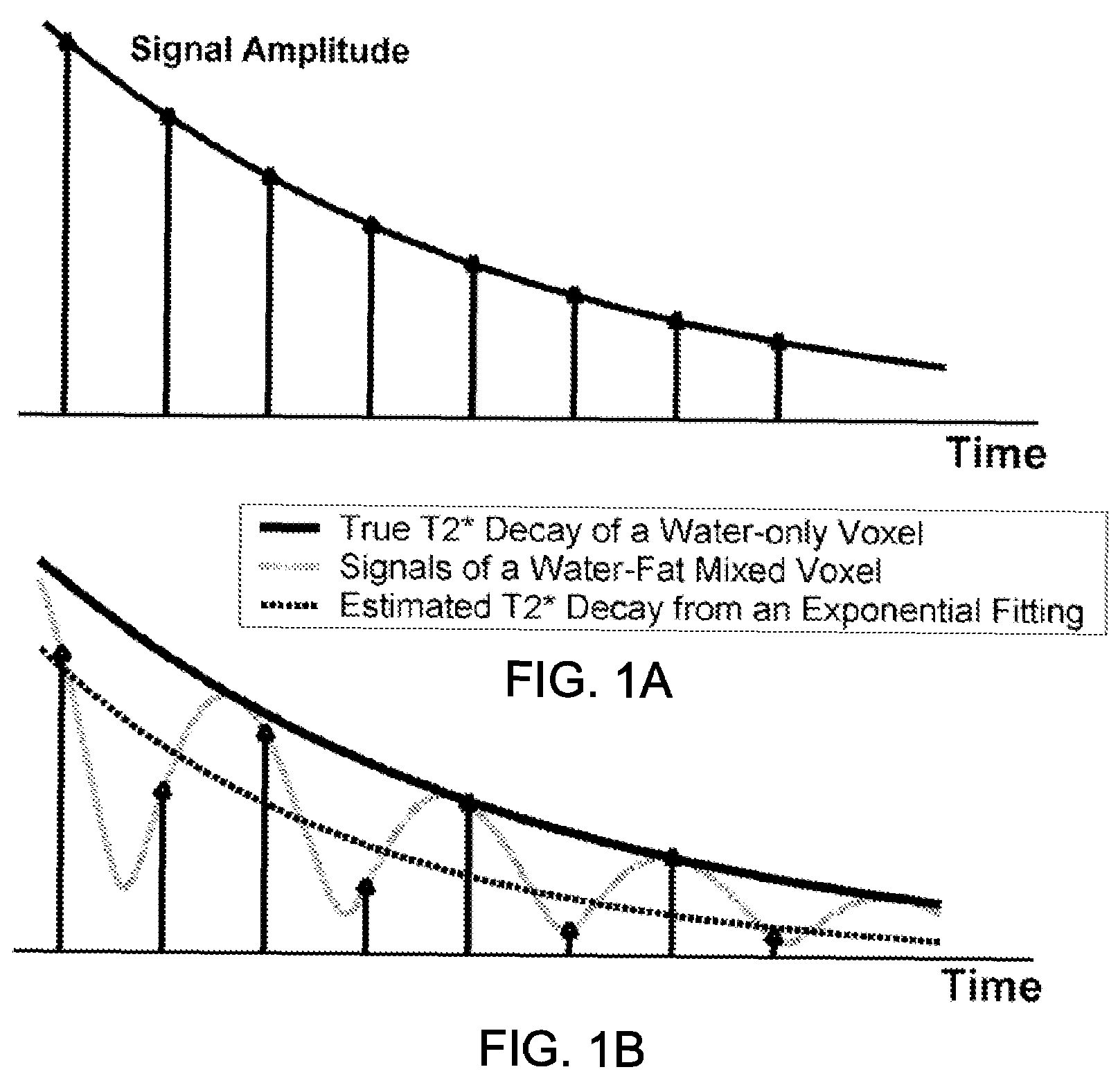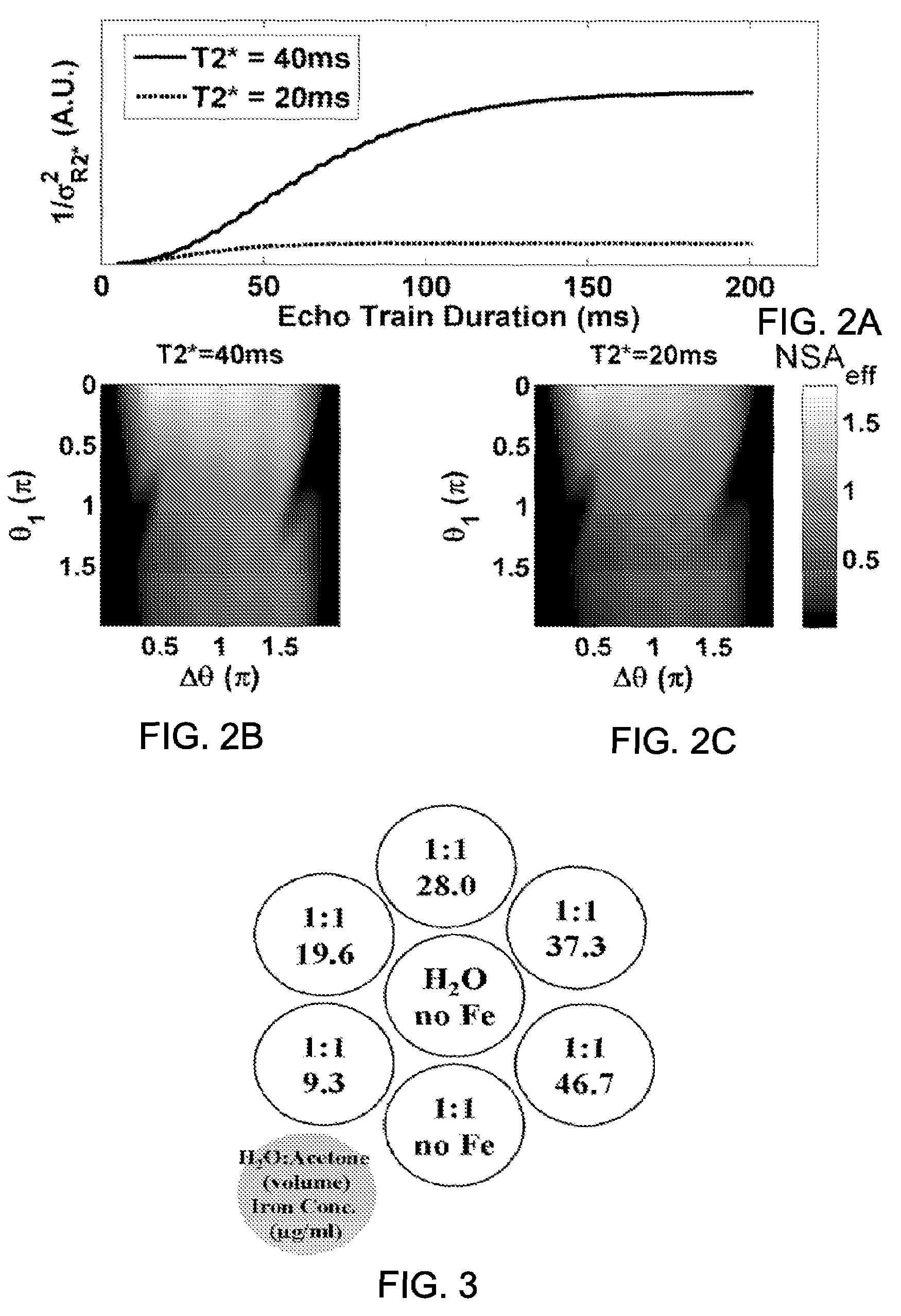Simultaneous chemical species separation and T2* measurement using MRI
a chemical species and simulation technology, applied in the field of magnetic resonance imaging, can solve the problems of limiting stir imaging to tsub>2 /sub>, and the method is also sensitive to field inhomogeneities
- Summary
- Abstract
- Description
- Claims
- Application Information
AI Technical Summary
Benefits of technology
Problems solved by technology
Method used
Image
Examples
Embodiment Construction
[0022]In performing species decomposition, it has been found that the presence of a shortened T2* decay causes an interference, which make such processes less accurate. For example, an increasing concentration of iron (Fe) will increase inaccuracies in measuring fat and water concentration. On the other hand, measurements of the concentration of iron would be made inaccurate if water and fat co-exist.
[0023]MRI is increasingly important for the characterization of diffuse liver diseases. Non-Alcoholic Fatty Liver Disease (NAFLD) is now recognized as one of the most common chronic liver disease, affecting up to 20% of the United States population. Hepatic steatosis, or fatty infiltration of the liver, is the primary feature and the earliest manifestation of NAFLD. MRI is emerging as a valuable non-invasive tool for early detection and monitoring of steatosis. Hepatic iron overload resulting from diseases, including genetic hemochromatosis and transfusional hermosiderosis, is also a co...
PUM
 Login to View More
Login to View More Abstract
Description
Claims
Application Information
 Login to View More
Login to View More - R&D
- Intellectual Property
- Life Sciences
- Materials
- Tech Scout
- Unparalleled Data Quality
- Higher Quality Content
- 60% Fewer Hallucinations
Browse by: Latest US Patents, China's latest patents, Technical Efficacy Thesaurus, Application Domain, Technology Topic, Popular Technical Reports.
© 2025 PatSnap. All rights reserved.Legal|Privacy policy|Modern Slavery Act Transparency Statement|Sitemap|About US| Contact US: help@patsnap.com



